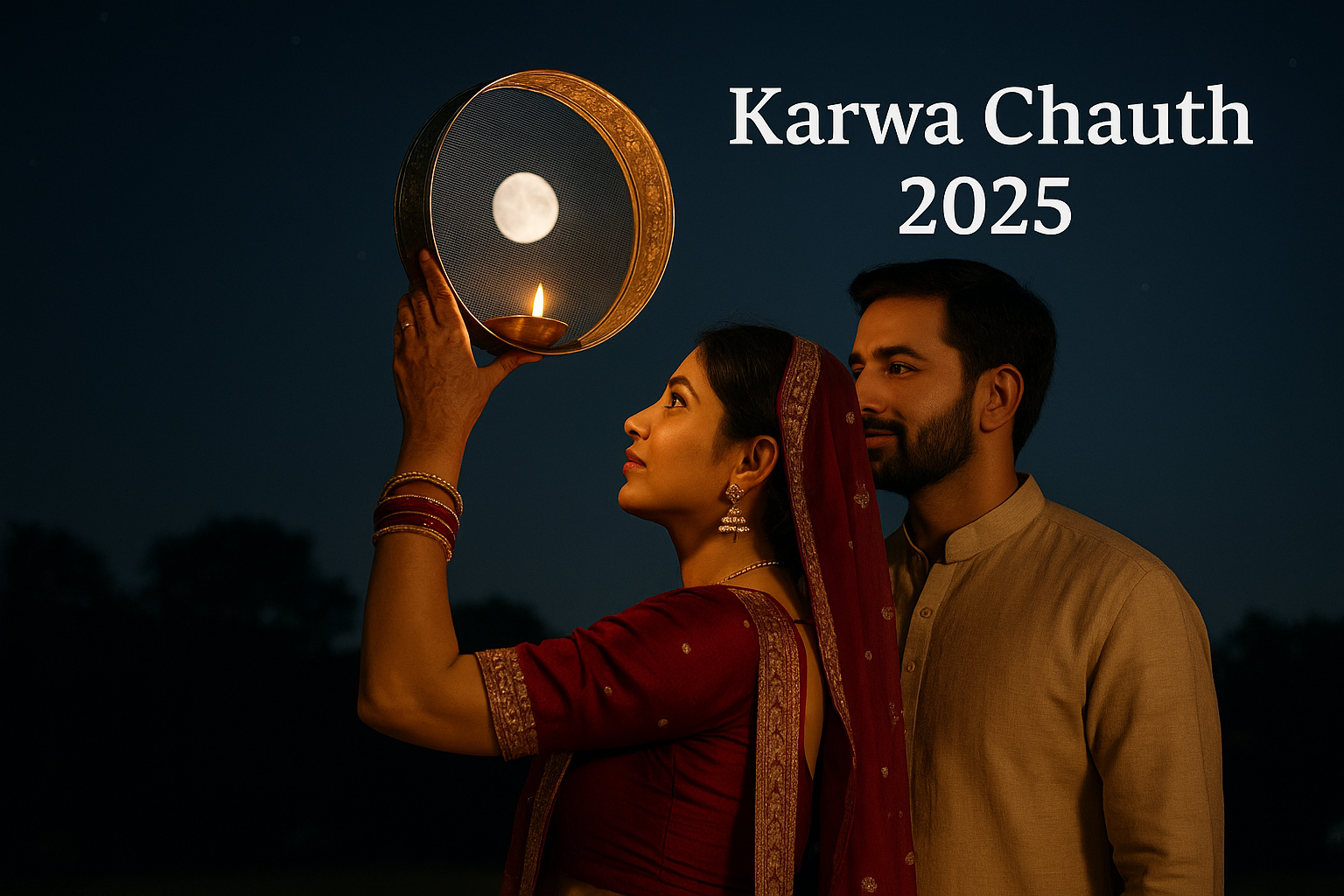Karwa Chauth is a festival that captures the spirit of love, faith, and family bonds in Indian culture. Falling on Friday, October 10, 2025, this special day remains one of the most cherished traditions for married couples, especially in northern India. Over generations, its rituals and stories have kept families close, helping people rediscover the meaning of sacrifice and affection.
Why Karwa Chauth is Celebrated
At its heart, Karwa Chauth is a celebration of married love and togetherness. Traditionally, wives observe a strict fast — no food or water from sunrise to moonrise — to pray for the long life, health, and happiness of their husbands. Today, the festival has evolved, with husbands sometimes fasting alongside their wives. More than just a ritual, Karwa Chauth is seen as a chance to express gratitude and strengthen emotional bonds.
The festival also coincides with Vakratunda Sankashti Chaturthi in 2025, believed to bring extra blessings and harmony into relationships.
Important Timings in 2025
Knowing the timings is important for a smooth celebration. Here are the main details:
- Date: Friday, October 10, 2025
- Fasting Start (Sargi Time): 6:19 AM
- Puja Muhurat (Evening Prayer): 5:57 PM to 7:11 PM
- Moonrise: 8:13 PM
City-wise puja timings can vary, so it’s worth checking locally for the exact moment of moonrise. For example, New Delhi celebrates between 5:57 PM to 7:11 PM, while Mumbai’s rituals are between 6:19 PM to 7:33 PM.
Step-by-Step Rituals and Customs
Karwa Chauth is filled with meaningful traditions that create a memorable experience each year.
1. Sargi – The Pre-Dawn Meal
Before the sun rises, women eat a meal called Sargi, which is lovingly given by the mother-in-law. This meal usually has fruits, dry fruits, coconut water, and sweets to provide energy for the long day ahead.
2. Fasting with Devotion
Once the sun is up, women begin their nirjala vrat, meaning no food or water until they finally see the moon. During the fast, people avoid negative thoughts and instead focus on prayers and hope.
3. Getting Ready for the Puja
In the evening, women gather with friends and family, dressed in vibrant sarees and adorned with mehendi and traditional jewelry. They prepare a puja thali containing a diya, incense sticks, flowers, kumkum, and a small earthen pot called karwa. Some women also keep nine items for goddess sringar: saree, bangles, sindoor, comb, bindi, mehendi, nail polish, and others.
4. Performing Puja Together
Everyone sits with the image of Chauth Mata or Goddess Parvati for the puja, reciting the Karwa Chauth katha and legend. Offerings—fruits, sweets, and kheer—are placed on a red cloth for blessings. Many give away a filled karwa as charity to a Brahmin or another married woman, wishing happiness and good luck.
5. Moon Sighting and Breaking the Fast
When the moon rises, women use a sieve during the ritual, first offering water to the moon and then looking at their husband’s face through the sieve. This is seen as a symbol of love and a wish for a happy future together. The husband then gives water or food to break the fast, sharing a proud moment of unity.
6. Eating Light After the Fast
Following the ceremony, it’s wise to start with water, milk, light sweets, or fruits. Avoid heavy, spicy, or oily foods immediately after fasting to stay comfortable.
Stories and Symbolism
Many inspiring tales are behind Karwa Chauth’s meaning. The legend of Savitri–Satyavan and Queen Veervati, for instance, shows the strength of love and faith, teaching everyone the importance of patience and devotion.
Karwa Chauth Today
Although it began as a women’s ritual, Karwa Chauth now welcomes couples and families to celebrate together. The day is often filled with laughter, music, and blessings, bridging past traditions with modern values of equality and mutual respect. Whether celebrated in bustling cities or villages, Karwa Chauth invites everyone to pause, express care, and celebrate the power of relationships.
Karwa Chauth 2025 is about love, sacrifice, and hope. It’s a day to cherish old customs, dress in bright colors, enjoy family stories, and build stronger relationships through rituals that last a lifetime.
Also Read:


